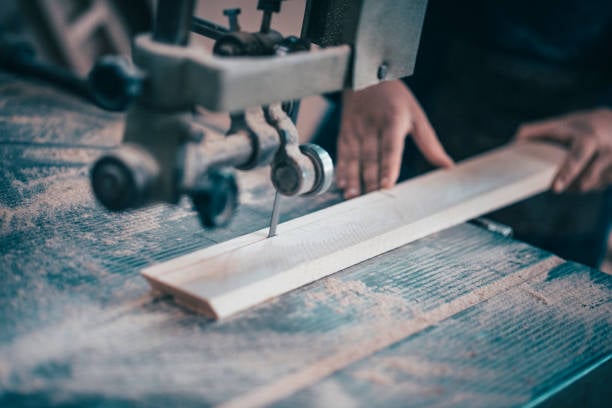Introduction
When it comes to cutting curves in various materials, having the right jigsaw blade is essential. A jigsaw blade specifically designed for curves can make all the difference in achieving smooth and precise cuts. In this article, we will explore the different aspects of jigsaw blades for curves, including their features, types, and how to choose the perfect blade for your needs.
Understanding Jigsaw Blades for Curves
Before delving into the specifics of jigsaw blades for curves, it's important to understand what makes them unique. Unlike other jigsaw blades, these blades are specifically designed to navigate tight curves and intricate patterns with ease. They are typically narrower and have a higher tooth count compared to general-purpose jigsaw blades, allowing for greater control and precision.
The Importance of Choosing the Right Blade
Choosing the right jigsaw blade for curve cutting is crucial for achieving clean and accurate results. Using the wrong blade can lead to rough cuts, splintering, and even damage to the workpiece. Therefore, it is essential to consider various factors before making your selection.
Types of Jigsaw Blades for Curves
There are several types of jigsaw blades available for cutting curves, each with its own unique features and benefits. Let's take a closer look at some of the most common types:
1. High Carbon Steel Blades
High carbon steel blades are a popular choice for cutting curves in wood and plastic. They are affordable, durable, and suitable for general curve cutting applications. However, they may not be as effective when cutting through harder materials or metals.
2. Bi-Metal Blades
Bi-metal blades are a versatile option for cutting curves in various materials, including wood, metal, and plastic. These blades have a high-speed steel cutting edge welded onto a flexible carbon steel body, offering excellent durability and versatility.
3. Carbide-Tipped Blades
Carbide-tipped blades are the go-to choice for cutting curves in hard materials such as hardwood, laminate, and metals. The carbide teeth on these blades provide superior cutting performance and extended blade life, making them ideal for demanding applications.
Choosing the Right Blade for Your Needs
When selecting a jigsaw blade for curves, consider the following factors:
1. Material
Different materials require different blade types. Consider the type of material you will be cutting and choose a blade specifically designed for that material.
2. Tooth Count
The tooth count of the blade determines the aggressiveness and finish of the cut. For smoother cuts, choose a blade with a higher tooth count.
3. Blade Thickness
The thickness of the blade affects the cutting performance and the tightness of curves it can handle. Thinner blades are more suitable for intricate and tight curves.
4. Blade TPI (Teeth Per Inch)
The TPI refers to the number of teeth on the blade per inch. Higher TPI blades are ideal for cutting curves in delicate materials, while lower TPI blades are better suited for faster and rougher cuts in thicker materials.
5. Shank Type
Consider the shank type of the blade, as it should be compatible with your jigsaw. The most common shank types are T-shank and U-shank.
Tips for Using Jigsaw Blades for Curves
Here are some handy tips to help you achieve the best results with your jigsaw blades for curves:
1. Mark Your Curves
Before cutting, mark your curves on the workpiece using a pencil or a template. This will guide your blade and ensure accuracy.
2. Start Slowly
When starting a curved cut, begin at a slow speed to maintain control. Gradually increase the speed as you get accustomed to the curve.
3. Use a Pilot Hole
For tight curves, drilling a small pilot hole can make it easier to insert the jigsaw blade and navigate the curve smoothly.
4. Let the Blade Do the Work
Avoid applying excessive pressure while cutting curves. Let the blade's teeth do the cutting and guide the jigsaw steadily along the marked curve.
5. Consider Clamping
If the workpiece is small or prone to movement, consider clamping it down securely to prevent any unwanted shifts during cutting.


